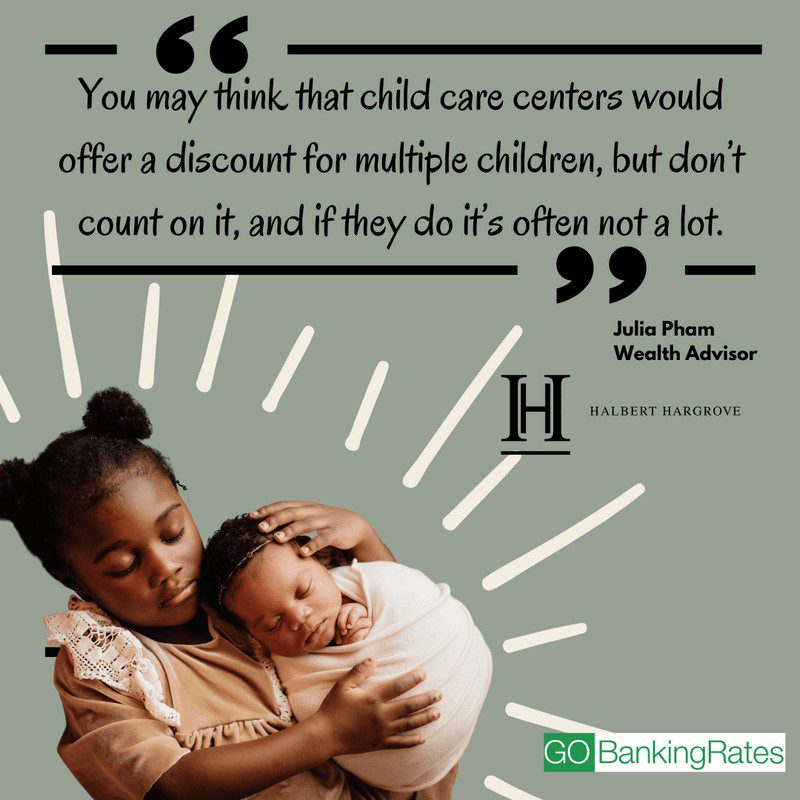By Gabrielle Olya, GoBankingRates featuring Julia K. Pham, CFP®, AIF®, CDFA®, Wealth Advisor at Halbert Hargrove
If you’re already a parent, there’s a lot less “unknown” when you’re getting ready to welcome a second, third or fourth child into your family. However, there are still certain things you need to financially prepare for each time a new child joins the family. In this “Financially Savvy Female” column, we’re chatting with Julia Pham, a wealth advisor at Halbert Hargrove who recently welcomed her second child, about what parents should do ahead of welcoming their new addition.
If you already have one child, you may not feel like you have to do too much financial prep work for a second child, but what expenses should parents be prepared for that they may not anticipate?
Kids are undoubtedly expensive, and there are a few things that may take you by surprise financially when welcoming your second (or third or fourth) child. It’s important to plan well in advance for child care, especially if you have a two-working-parent household.
In the U.S., the average cost of center-based infant care is $1,230 per month, and can vary drastically depending on where you live. You may think that child care centers would offer a discount for multiple children, but don’t count on it, and if they do it’s often not a lot. Expect to double the cost of child care, or research alternative options, like teaming up with other parents for a nanny share, which may help reduce your overall cost.
Be sure to utilize a Flexible Spending Account for Dependent Care, which is similar to the Medical FSA and funded with pre-tax dollars. This account can be used to pay for eligible expenses such as day care, babysitting or nanny expenses.
Another big surprise for me was how much we would need to save for college for our second child. As we’ve all seen, inflation has been on a tear, and the upward pressure can be seen on college expenses as well. On average, college tuition increases by 8% annually. If you’ve waited a few years between having children, you’ll see that the projected cost of [sending] the second [child to college] will jump significantly. Use an online calculator to help determine how much to save, and consider funding college expenses through a 529 account, which offers tax-deferred growth on investments and tax-free distributions when used for qualifying expenses.


